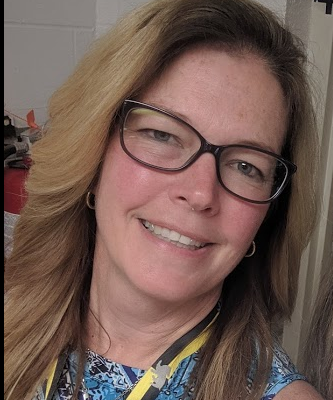 The arrival of 15 Chromebooks was something of an oddity in our elementary school where we have primarily turned to Macbooks over the past few years as part of a technology adoption plan. My sixth graders were certainly intrigued as they saw the pile of stylish laptops in the classroom. Some noted that they, too, had Chromebooks at home for personal use. Others had never heard of Chromebooks, which are undersized laptops that connect directly the Internet and use Chromium as the main operating system. The costs of Chromebooks are affordable because the design and interface is streamlined for web access, as opposed to traditional hard drive access.
The arrival of 15 Chromebooks was something of an oddity in our elementary school where we have primarily turned to Macbooks over the past few years as part of a technology adoption plan. My sixth graders were certainly intrigued as they saw the pile of stylish laptops in the classroom. Some noted that they, too, had Chromebooks at home for personal use. Others had never heard of Chromebooks, which are undersized laptops that connect directly the Internet and use Chromium as the main operating system. The costs of Chromebooks are affordable because the design and interface is streamlined for web access, as opposed to traditional hard drive access.
Everyone wanted to be the first to use them for our class writing projects at the William E. Norris Elementary School in Southampton. As the sixth grade writing teacher, I have been curious to see how the new Chromebooks can help my students dive deeper with the curation of their Digital Writing Portfolios that we have begun piloting. A grant from MassCUE helped us purchase the Chromebooks, and with our Google Apps for Education accounts already in full use, the Chromebooks provided additional access to stories, essays, presentations, and other assorted media that my students had been creating and collecting all year.
It was not a huge shift to go from using Macbooks and Google Apps for Education to using Chromebooks. However, the addition of a set of Chromebooks helped to free up our Macbooks for other teachers in the building. My sixth grade teaching colleagues have been as intrigued as students. I have shared the Chromebooks with our science, social studies, math, and special education teachers as we think collaboratively about best practices to integrate writing and reflective curation using technology across the content areas.
Thanks to Hampshire Regional School District Technology Coordinator Kim Florek and our own school’s technology coordinator, Steve Silva, we were able to get the new Chromebooks up and running, putting the technology into the hands of our students in no time. By the end of the school year, all sixth graders had an opportunity to use the Chromebooks for writing and constructing their Digital Writing Portfolios. Their work will follow them into the Regional Middle/High School. See my articles on MiddleWeb about how I started to use a digital portfolio to document my teaching practice and how my students used digital portfolios for their own writing.
The Chromebooks and Google Apps for Education accounts have now become integral in our students’ transition to the sixth grade. Right from the start of the year, students use technology to begin writing and building the first cornerstones of their Digital Writing Portfolios.
We are grateful for the support of MassCUE in making this happen and intend to share out our experiences of digital portfolios with colleagues in our school district and beyond. The pilot program with the sixth grade provided us with data on how Chromebooks function over time, and is helping us to inform the School Committee and school administration on how to put limited resources to work in order to put technology directly into the hands of students.
 Kevin Hodgson teaches sixth grade at the Willliam E. Norris Elementary School and is the co-director for outreach with the Western Massachusetts Writing Project
Kevin Hodgson teaches sixth grade at the Willliam E. Norris Elementary School and is the co-director for outreach with the Western Massachusetts Writing Project
Email: khodgson@hr-k12.org
 Print this post
Print this post



